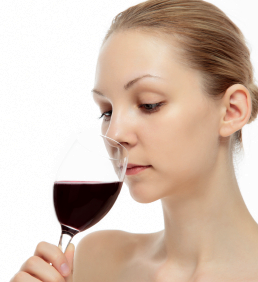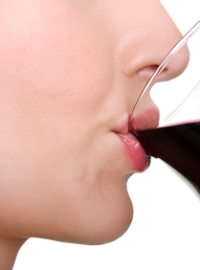|
ABOUT ME
RETAILERS & AGENTS
CONTACT ME
|
|||||
|
|||||
|
|||||
|
|||||
Step 4 - tasting your wineYippee - time to taste! Okay, review time. Colour...check, aromas...check. Now, let's see if everything you've so far discovered in the glass, corresponds with what you're tasting. How to taste. Take some wine into your mouth and let it sit on your tongue without swallowing. Pull some air into your mouth (carefully, don't choke!) and let it flow across the wine. The air will be sucked into the back of your throat where it will reconnect with your olfactory and confirm what you are tasting. Think about it this way. You have an olfactory memory of thousands upon thousands of aromas, which you have come across and smelled over your lifetime. You may remember penny candies - marshmallow bananas and strawberries or Sen Sens, Double Bubble, Bonnie Bell Root Beer lip gloss, chamomile tea, rain on a spring day, the smell of hay at the stable or the smell of the saddle leather... anything you remember.
What can you actually taste though? Sweet, salty, bitter, sour and something called umami (which is less understood, and is an entirely other conversation), are what your taste buds can decipher. Proof. When you have a cold and your olfactory is obstructed, you assume you "cannot taste anything". The reality is, you cannot smell anything. It severely inhibits your enjoyment of food. Please revisit the comment I made above in STEP 3 - the importance of smelling your wine!
Next, take another sip of wine and chew on it a bit - move it around and swish it across your tongue and inside of your cheeks and again, take more air into your mouth allowing it to mingle with the wine. You'll find that this will give you an even greater sense of what you are tasting, including sweetness (don't be afraid of some sweetness (fruit is sweet after all), sourness, bitterness and acidity.
Red wines are generally fuller bodied than white wines, but not always. Think about all of these things every time you taste a wine. Each time you purchase a new bottle. Each time a friend pours a wine at a dinner party, each time you order a glass or bottle in a restaurant - take these steps, at least for the first half glass you drink. This is how you build, what I call, your wine rolodex! Your wine rolodex is where you begin storing your memories of previous wines you've experienced. You'll begin to notice similarities in wines you have had previously and start to draw conclusions to what you are currently encountering. Finding similarities in varieties is the best way to learn about wine first. The grassiness of Sauvignon Blanc, the peppery quality of Shiraz/Syrah, the unique fragrance of Gewürztraminer... The more you taste, the more your rolodex grows and the more confident you will become about what you like and what is in your glass! Let's recap
Look - How intense is the colour - what does that colour tell you to expect?
Cheers, Don't know where to start? WineDiva can help. Start rating wines you have tasted and I can send you recommendations for more wines you will like, based on your palate - WineDiva is the only one who can do this. But you have to start rating wines to give me a sense of what you like! Here's how to do it... Coming up - What to Expect in Your Wine! what are some classic characteristics of your favourite wines and varieties. |
||||||||
| WineDiva is a registered trademark. Unauthorized use is prohibited. Contact | Home | ||

